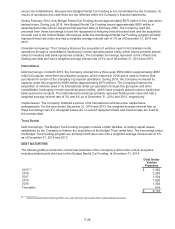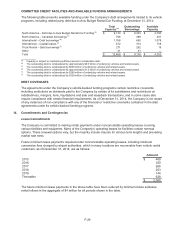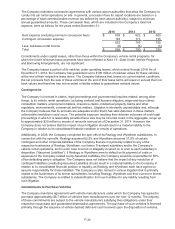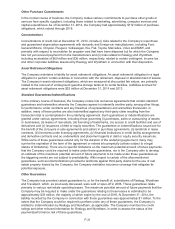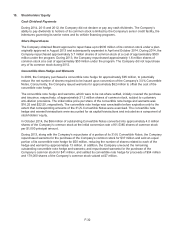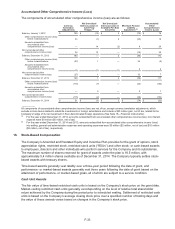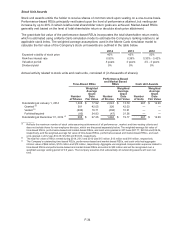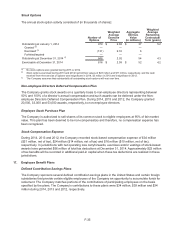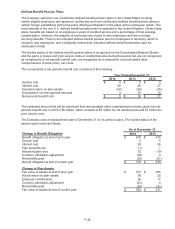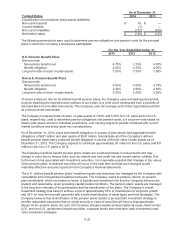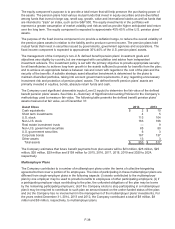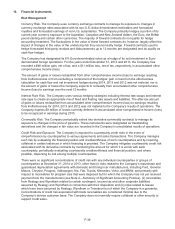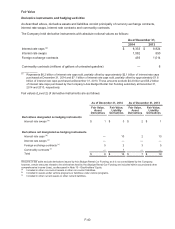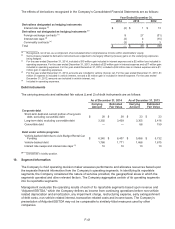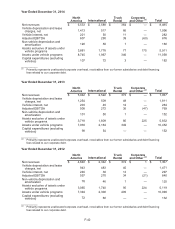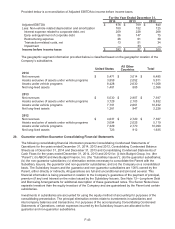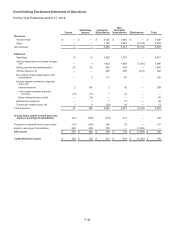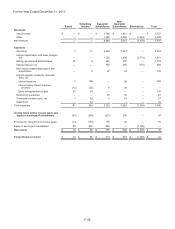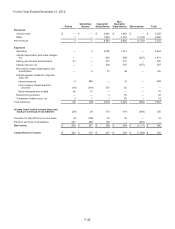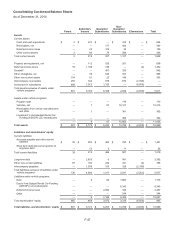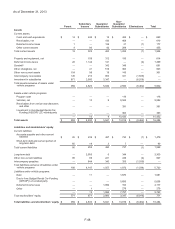Avis 2014 Annual Report Download - page 105
Download and view the complete annual report
Please find page 105 of the 2014 Avis annual report below. You can navigate through the pages in the report by either clicking on the pages listed below, or by using the keyword search tool below to find specific information within the annual report.
F-38
The equity component’s purpose is to provide a total return that will help preserve the purchasing power of
the assets. The pension plans hold various mutual funds that invest in equity securities and are diversified
among funds that invest in large cap, small cap, growth, value and international stocks as well as funds that
are intended to “track” an index, such as the S&P 500. The equity investments in the portfolios will
represent a greater assumption of market volatility and risk as well as provide higher anticipated total return
over the long term. The equity component is expected to approximate 45%-65% of the U.S. pension plans’
assets.
The purpose of the fixed income component is to provide a deflation hedge, to reduce the overall volatility of
the pension plans assets in relation to the liability and to produce current income. The pension plans hold
mutual funds that invest in securities issued by governments, government agencies and corporations. The
fixed income component is expected to approximate 30%-40% of the U.S. pension plans’ assets.
The management of the Company’s non-U.S. defined benefit pension plans’ investment goals and
objectives vary slightly by country, but are managed with consultation and advice from independent
investment advisors. The investment policy is set with the primary objective to provide appropriate security
for all beneficiaries; to achieve long-term growth in the assets sufficient to provide for benefits from the plan;
and to achieve an appropriate balance between risk and return with regards to the cost of the plan and the
security of the benefits. A suitable strategic asset allocation benchmark is determined for the plans to
maintain diversified portfolios, taking into account government requirements, if any, regarding unnecessary
investment risk and protection of pension plans’ assets. The defined benefit pension plans’ assets are
primarily invested in equities, bonds, absolute return funds and cash.
The Company used significant observable inputs (Level 2 inputs) to determine the fair value of the defined
benefit pension plans’ assets. See Note 2—Summary of Significant Accounting Policies for the Company’s
methodology used to measure fair value. The following table presents the defined benefit pension plans’
assets measured at fair value, as of December 31:
Asset Class 2014 2013
Cash equivalents $ 2 $ 10
Short term investments 4 5
U.S. stock 113 104
Non-U.S. stock 163 166
Real estate investment trusts — 9
Non-U.S. government securities 85 80
U.S. government securities 6 3
Corporate bonds 167 137
Other assets 13 3
Total assets $ 553 $ 517
The Company estimates that future benefit payments from plan assets will be $23 million, $25 million, $25
million, $26 million, $29 million and $158 million for 2015, 2016, 2017, 2018, 2019 and 2020 to 2024,
respectively.
Multiemployer Plans
The Company contributes to a number of multiemployer plans under the terms of collective-bargaining
agreements that cover a portion of its employees. The risks of participating in these multiemployer plans are
different from single-employer plans in the following aspects: (i) assets contributed to the multiemployer
plan by one employer may be used to provide benefits to employees of other participating employers; (ii) if
a participating employer stops contributing to the plan, the unfunded obligations of the plan may be borne
by the remaining participating employers; (iii) if the Company elects to stop participating in a multiemployer
plan it may be required to contribute to such plan an amount based on the under-funded status of the plan;
and (iv) the Company has no involvement in the management of the multiemployer plans’ investments. For
the years ended December 31, 2014, 2013 and 2012, the Company contributed a total of $9 million, $8
million and $9 million, respectively, to multiemployer plans.


